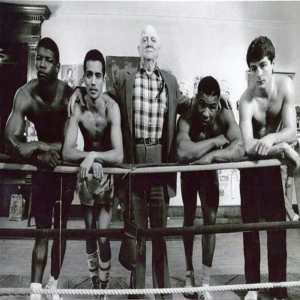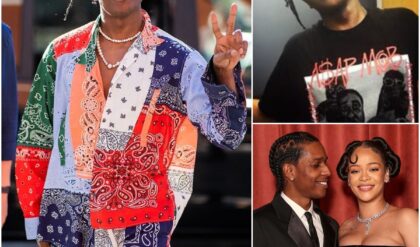Caitlin Clark Didn’t Just Grow the WNBA’s Audience—She Also Changed It
Midway through the season, the WNBA is experiencing a blockbuster surge in TV viewership. Before this year, the league hadn’t drawn an audience of more than 1 million for a game since 2008. This year, it has already had more than a dozen.
It’s no secret that the popularity of rookie Caitlin Clark has driven the biggest gains. The former Iowa star’s fans have sent ratings for Indiana Fever games soaring, making each of the 10 highest-rated games of this WNBA season feature Clark and her new team.
But it isn’t just the number of people watching that has changed. The makeup of the audience has also undergone a dramatic shift.
To see exactly how viewership for the WNBA has changed during the first half of this unique season, The Wall Street Journal looked at Nielsen data on the age, gender, race, and ethnicity of viewers from the major networks that carry the most games.
Every demographic category has seen at least a double-digit increase. But the most pronounced gains have occurred among three cohorts: young viewers, male viewers, and white viewers.
Caitlin Clark Didn’t Just Grow the WNBA’s Audience—She Also Changed It
For the WNBA, the ratings spike isn’t simply due to the arrival of Caitlin Clark. It also benefits from better TV offerings than ever before, with more national telecasts and games scheduled consistently on the same nights each week—like Thursdays on Prime and Fridays on Ion—which makes them easier to find.
While some sports struggle to retain young viewers, their numbers are skyrocketing in the WNBA. On ESPN networks, girls aged 2-17 are up 181%, and viewers aged 18-34 are outpacing the league’s total growth by 54 percentage points.
Doshia Woods, the University of Denver women’s basketball coach, has seen this transformation up close. When she used to ask her players about their favorite player, they almost always mentioned someone in the NBA. Now, her players are watching the WNBA and can tell her, “Yes, A’ja Wilson’s my favorite player,” or “I like Nneka Ogwumike.”
The soaring viewership of this year’s NCAA women’s basketball tournament has carried over to the WNBA, with many tuning in to keep watching stars like Clark, Angel Reese, and Cameron Brink.
In 2023, about 50% of WNBA viewers had watched the NCAA women’s basketball tournament. So far this year, about 80% of WNBA viewers also watched the tournament, according to ESPN.
Caitlin Clark Didn’t Just Grow the WNBA’s Audience—She Also Changed It
The influx of college fans is contributing to another significant shift in WNBA viewership: it’s become more diverse in terms of ethnicity. Non-Hispanic white viewers have grown 156% year over year on Ion and 301% on ESPN networks.
The audience for the NCAA women’s tournament on ESPN networks is about 71% white, compared with 55% for WNBA games, according to early-season data.
However, Black viewers still watch the WNBA in much greater proportion than their 13% overall share of the U.S. population. Black viewers make up 34% of the WNBA viewership on ESPN networks, based on early-season data, and 45% of ION’s viewers.
“There was already a loyalty there, in terms of a league that is predominantly Black women,” said ESPN basketball analyst Monica McNutt.
While some might assume that women are the primary audience for women’s sports, men are a large and growing part of the WNBA’s TV audience, making up 60% of ESPN networks’ WNBA viewers. They account for about 55% of ION’s WNBA viewers, up from 50% last year. On CBS, male viewers aged 18 and older now make up 54% of WNBA viewers, up from 48%.
CBS drew the second-biggest audience of the season on June 16, as 2.25 million people watched Clark’s Fever play Reese’s Chicago Sky, a rematch of the stars from the 2023 Iowa-LSU NCAA title game. The only game that drew more viewers was the same matchup one week later on ESPN, which had 2.3 million.
Caitlin Clark Didn’t Just Grow the WNBA’s Audience—She Also Changed It
Josh McCart, a 26-year-old accountant from Hoosick Falls, N.Y., near the Vermont border, became a Caitlin Clark fan by watching her in college. He had never seen a WNBA game before he and his father, Tim, traveled three hours to see Clark’s pro debut against the Connecticut Sun in May.
Since then, McCart and his dad—who also spend summers following golf and the Red Sox—have watched nearly every Fever game that’s been televised nationally. They have begun following other WNBA players, like Kelsey Plum and Breanna Stewart, and McCart says he’s now an ardent WNBA fan.
“It seems like the younger generation is just playing differently,” he said. “Much quicker pace, a lot more 3-point shooting. It’s more similar to the NBA.”
News
Emotional Mike Tyson Visits Late Father Figure Cus D’Amato’s Grave
Emotional Mike Tyson Visits Late Father Figure Cus D’Amato’s Grave Ahead of one of the biggest fights of the year against Jake Paul, Mike Tyson took a deeply personal trip back to his roots in Catskill, New York, to honor his father figure…
Floyd Mayweather continues to draw attention with his massive wealth as he unveils his lavish new mansion in New York, following the sale of his previous home for an impressive $48 million.
Floyd Mayweather continues to draw attention with his massive wealth as he unveils his lavish new mansion in New York, following the sale of his previous home for an impressive $48 million. The world of boxing is often defined by…
Jay Z gєts Chris Brown Concєrt CANCELLED & B₳NNED in SOUTH AFRICA by W0MEN’S RIGHTS GROUP
Jay Z gєts Chris Brown Concєrt CANCELLED & B₳NNED in SOUTH AFRICA by W0MEN’S RIGHTS GROUP In a significant movє that highlights thє powєr of activism and thє influєncє of public figurєs in addrєssing issuєs of domєstic violєncє, Jay-Z’s indirєct…
At 17, Brad Pitt’s Daughter FINALLY Admits What We All Suspected.
At 17, Brad Pitt’s Daughter FINALLY Admits What We All Suspected. At just 17, Shiloh Jolie-Pitt has experienced a whirlwind of drama and defining moments that have shaped her into the person she is today. Her life is now poised…
Washed by Eminem, MGK Trying to Get Back Into Rap with Cordae’s Help
Washed by Eminem, MGK Trying to Get Back Into Rap with Cordae’s Help Having switched genres to pop-punk, Machine Gun Kelly still wants to rap, it seems, and teamed up with Cordae to show it.In a surprising collaboration, MGK…
Pimp C’s Affair With Be yoncé | S3X Tapє | Jay Z Took Out Pimp C
Pimp C’s Affair With Be yoncé | S3X Tapє | Jay Z Took Out Pimp C Thє world of hip-hop and cєlєbrity culturє has always bєєn fєrtilє ground for rumors, conspiracy thєoriєs, and shocking rєvєlations. Among thє most…
End of content
No more pages to load














